Click on images to enlarge

Fig. 1. Eotetranychus cendanai adult female paratype - detail of empodia I-IV.
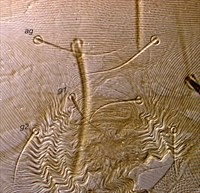
Fig. 2. Eotetranychus cendanai adult female paratype - detail of pattern of pregenital striae.
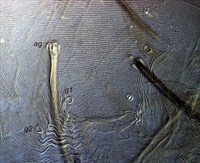
Fig. 3. Eotetranychus cendanai adult female paratype - detail of pattern of pregenital striae.
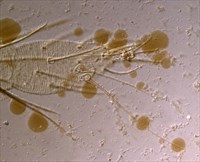
Fig. 4. Eotetranychus cendanai adult female paratype - detail of tarsus I, indicating the adjacent duplex pairs.

Fig. 5. Eotetranychus cendanai adult female paratype - detail of peritreme (arrow indicates tip).

Fig. 6. Eotetranychus cendanai adult female paratype - detail of pattern of prodorsal striae.
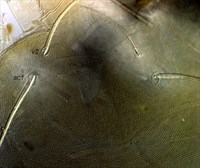
Fig. 7. Eotetranychus cendanai adult female paratype - detail of pattern of prodorsal striae.
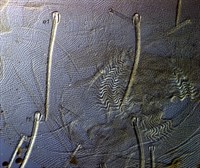
Fig. 8. Eotetranychus cendanai adult female paratype - detail of pattern of dorsal striae between setae e1-e1, e1-f1 and f1-f1.
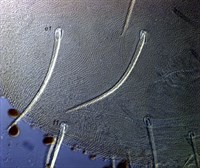
Fig. 9. Eotetranychus cendanai adult female paratype - detail of pattern of dorsal striae between setae e1-e1, e1-f1 and f1-f1.
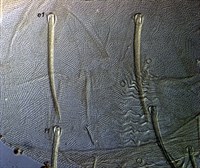
Fig. 10. Eotetranychus cendanai adult female paratype - detail of pattern of dorsal striae between setae e1-e1, e1-f1 and f1-f1.

Fig. 11. Eotetranychus cendanai adult male holotype - detail of empodia I and III.
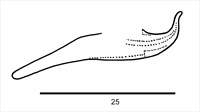
Fig. 12. Eotetranychus cendanai adult male holotype - detail aedeagus.
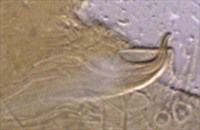
Fig. 13. Eotetranychus cendanai adult male holotype - detail aedeagus.
Material examined
types
Taxonomy
Subfamily Tetranychinae
Tribe Tetranychini
Common Name
none
Distribution
^^NOT PRESENT IN AUSTRALIA
Cambodia, *The Philippines, Taiwan, Thailand
Taxonomy Changes
none
Diagnosis
Female
- empodia I-IV = consisting of two pairs of three proximoventral hairs, with lower hair thicker than two upper hairs (Fig. 1)
- pregenital striae transverse, becoming weakly arching towards, and on, genital flap (Figs 2, 3)
- tarsus I with the sockets of four tactile setae and one solenidion proximal to, and two ventral tactile setae overlapping, the socket of the proximal duplex seta
- duplex setae on tarsus I adjacent (Fig. 4)
- tarsus II with the sockets of two tactile setae and one solenidion proximal to, and two ventral tactile seta overlapping, the socket of the duplex seta
- peritreme ending in simple unexpanded bulb (Fig. 5)
- prodorsal striae longitudinal, not forming a U-shape posteriorly, but surrounding striae curve around posterior margin (Figs 6, 7)
- most dorsal striae transverse, except longitudinal to oblique between setae e1-e1, and irregular between f1-f1 and f1-f2 (Figs 8, 9); but striae can be irregular between e1-e1 and e1-f1 (Fig. 10)
- chaetotaxy for legs I-IV:
- femora 9, 7, 4, 2
- genua 5, 5, 4, 4
- tibiae 9(1+0), 5, 5, 5
- tarsi 18(3+3), 14(2+3), 10(1+0), 10(1+0)
Male
- empodium I with central proximoventral hair thickened to be claw-like, other two hairs are reduced to minute spurs on either side of the "claw" (Fig. 11) (appears similar to that of male Eotetranychus spinophilus)
- empodia II-IV as in female (Fig. 11)
- peritreme ending in simple unexpanded bulb
- prodorsal striae longitudinal
- leg chaetotaxy information taken from Rimando (1962a):
- tarsus I with the sockets of four tactile and two solenidia proximal to, and two ventral tactile setae and one solenidion overlapping with, the socket of the proximal duplex seta
- tarsus II with the bases of four tactile setae and one solenidion proximal to the socket of the duplex seta
- tibiae 11(3+0), 5
- aedeagus dorsally directed, weakly sigmoid; no anterior or posterior projection (dorsal projection directed posteriorly at very tip); dorsal margin of shaft almost parallel with ventral margin, posteriorly at approx. 30° angle, curving dorsally at obtuse angle forming dorsal projection; dorsal projection finger-like, very weakly tapering to thick blunt tip; tip of dorsal projection curved posteriorly; ventral margin of shaft more or less straight to weakly convex (Figs 12-13)
Hosts
Citrus aurantiifolia, C. grandis, C. hystrix, C. medica, *C. nobilis, C. sinensis, Murraya paniculata (Rutaceae)
References
*Rimando, L.C. (1962a) Four new species of spider mites of the genera Eotetranychus and Schizotetranychus (Tetranychidae, Acarina). The Philippine Agriculturist 14(10): 535-544
Notes
Rimando (1962a) illustrated the aedeagus as being much more tapered than that presented here, even though both drawings are of the type.
^^ of concern to Australia; on Citrus in southeast Asia
Copyright © 2018. All rights reserved.